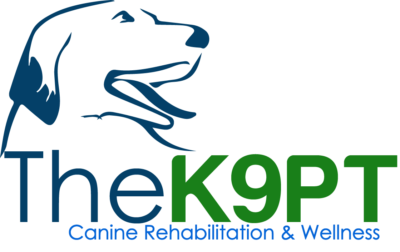What You Need to Know About IVDD and Back Pain in Dogs: Part 1
Back pain can range from mild to downright debilitating, and it’s no different for our furry friends. Intervertebral disc disease (IVDD) is one of the most common causes of back pain in canines and can lead to reduced mobility and quality of life. But just because it is common does not mean it should be taken lightly! Sometimes symptoms are much more serious, so it is always important to take action sooner rather than later if you suspect that your pup may have IVDD.
Anatomy and Function
Intervertebral discs are found between most of the bony vertebrae that make up the spine. Composed of fibrocartilage, they are like cushions for the spine, acting as shock absorbers and enabling mobility.
You can think of the disc as similar to a jelly donut. It has a fibrous outer layer termed the annulus fibrosus and a gelatinous, jelly-like inner layer termed the nucleus pulposus. A degenerative process, IVDD refers to weakened discs more capable of rupture or herniation, which is what happens when that jelly-like substance leaks out into the area of the spinal cord and connected nerve roots.

Types of IVDD
There are two types of IVDD that affect dogs:
In type I, which typically affects chondrodystrophic breeds, or those with abnormally short legs, the outer fibrous layer of the discs becomes harder and less flexible over time. This puts the disc at increased risk of having that jelly-like substance spill out where it doesn’t belong. High-impact activities like playing fetch or jumping are what trigger this rupture or herniation.
In type II, which typically affects nonchondrodystrophic breeds, the process is much more gradual and there is not a triggering event to initiate symptoms. Similar to type one, discs become harder and less flexible, but this happens over a longer period of time. Eventually the disc breaks down and that jelly-like substance bulges out, placing pressure on the spinal cord and nerves. Oftentimes the signs and symptoms are not as severe as those seen in type one.
It should be noted that severe trauma such as a car accident can result in symptoms similar to IVDD, but it would not be considered IVDD.
Signs and Symptoms
Pressure from the disc into the area of the spinal cord can disrupt nerve signals and cause symptoms ranging from mild to severe. Dogs with IVDD typically experience one or more of the following signs and symptoms:
- Back or neck pain
- Hunched posture
- Sensitivity to touch
- Anxious behavior
- Unsteadiness
- Inability to stand
- Hind limb weakness
- Inability to move the hind legs
- Inability to feel the hind legs
- Impaired bowel and/or bladder control

How Is It Diagnosed?
If you suspect that your dog may be suffering from IVDD, do not delay in making an appointment with your veterinarian. He or she will review the past medical history and do a physical examination to get a better idea of what may be causing your pup’s discomfort. A combination of imaging may also be done to rule in or out certain conditions and confirm the diagnosis of IVDD. This is important for determining the appropriate plan of care as the signs and symptoms are similar to those of other diseases such as meningitis, infection, and vascular issues.
Who Can Get One?
Dogs most commonly affected are among the chondrodystrophic breeds, like Dachshunds and Shih-Tzus, especially between the ages of three and six years. Some non-chondrodystrophic breeds, like German Shepherds and Labrador Retrievers, are also affected, though typically the occurrence falls in the age range of eight to 10 years.
No matter the breed or age, however, obesity remains a risk factor for the development and progression of IVDD.
The good news about IVDD is that in most cases it is very treatable. Early intervention is key for an optimal outcome, so if your precious pup is exhibiting one or more of the signs and symptoms listed above, please do not hesitate to get him or her checked out! No matter the course of treatment you and your vet decide to take, a certified canine rehab professional will be best able to guide your pup back to better living with more functional mobility and less pain.
In the next post, we will be discussing treatment options, so stay tuned!
~TheK9PT
Dr. Francisco Maia, PT, DPT, CCRT
In collaboration with:
Dr. Aliya Bahjet, PT, DPT
Professional Writer and Physical Therapist
